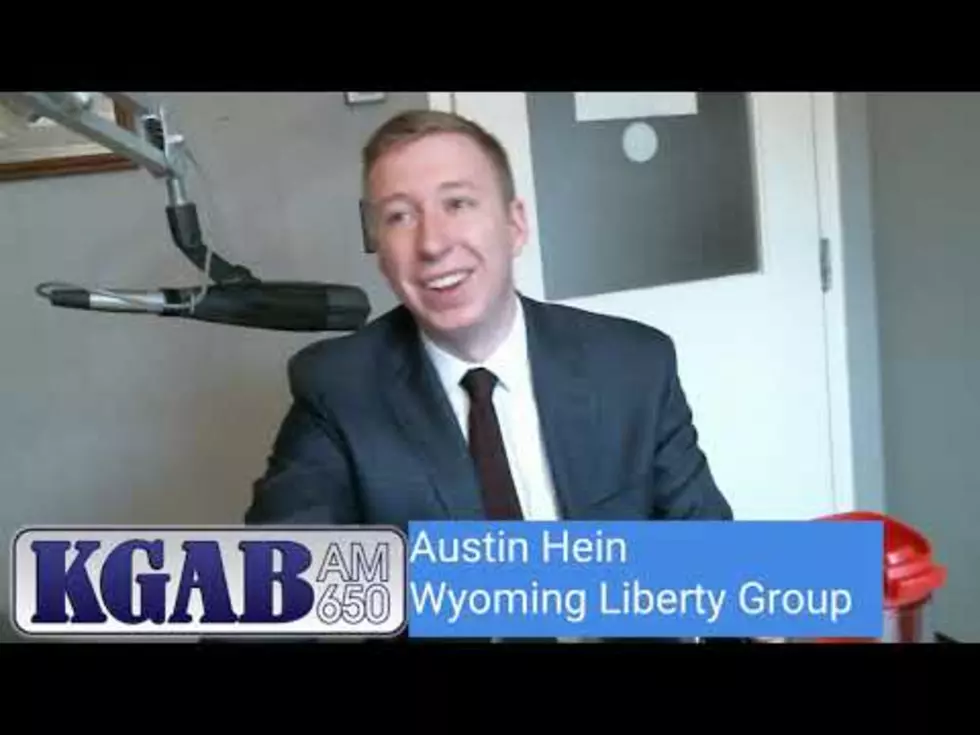
Wyoming Welfare Pays $32,000 per Year
(Sven Larson is an economist and columnist with the think tank, Wyoming Liberty Group and a frequent guest on KGAB's Morning Zone Program with Dave Chaffin. Here is Sven's latest column that he discussed on our program this morning in the 8 O'clock hour.)~~~
For those who still believe that government-provided welfare is the same as poverty relief, a new study from the Cato Institute should be a real wake-up call. Modern, tax-funded welfare has grown far beyond just helping the poor through tough times.
The intriguing new study by Cato Institute senior fellow Michael Tanner and research assistant Charles Hughes presents solid evidence that what we casually refer to as “welfare” in reality has become a conglomerate of systems for permanent income redistribution. Even worse is that the redistribution now furnishes the recipient with money and services that, in Wyoming, go well beyond the state’s $7.25* per hour minimum wage. In fact, the study reports that you would have to earn $15.68 per hour through work before you would clear an income equal to welfare benefits you can receive for free.
How is this possible? Tanner and Hughes explain that welfare is far more than Temporary Assistance to Needy Families. The federal government, they note:
currently funds 126 separate programs targeted toward low-income people, 72 of which provide either cash or in-kind benefits to individuals. (The remainder fund communitywide programs for low-income neighborhoods, but do not provide benefits directly to individual recipients.) State, county, and municipal governments operate additional welfare programs. Of course, no individual or family receives benefits from all 72 programs, but many recipients do receive aid from a number of the programs at any given time.
One major consequence of the vast number of programs is that the sum total provides individuals with a comparatively generous lifestyle. Tanner and Hughes observe that welfare is a competitive source of money for people otherwise looking at minimum-wage jobs. “[W]elfare currently pays more than a minimum wage job in 35 states, even after accounting for the Earned Income Tax Credit,” write Tanner and Hughes. “In fact, in 13 states, welfare pays more than $15 per hour.”
Wyoming is one of those 13 states. The per-recipient money value of welfare in our state equals a pre-tax wage of $32,620. This works out to an hourly wage of $15.68.
Currently, Wal-Mart in Cheyenne is looking for workers for a variety of low-skill jobs, promising to pay them $8.40 to $9.20 per hour. It is hard to ignore the discrepancy between what private employers can afford to pay and what the government offers as work-free compensation.
But the unfair competition offered by welfare goes beyond shelf stackers at Wal-Mart. According to the Bureau of Economic Analysis, the average non-minerals private-sector job in Wyoming offered a compensation of $33,943 in 2011. In total, welfare pays a Wyomingite 96 percent of that! The 4-percent difference is unlikely to motivate a welfare recipient to give up leisure for 40 hours of work every week. If we adjust the private-sector compensation number for federal income taxes and the balance between wage and benefits, the benefits recipient could be looking at a “pay cut” if he takes a job.
Today there are not that many jobs available in Wyoming, with practically no job growth in the private sector. One could therefore make the case that it does not matter that people on welfare in Wyoming are paid fairly generously. But the fact of the matter is that excessively generous welfare systems create a major hurdle for employers in recruiting low-skill workers. The hurdle could in fact be big enough to derail our economy as it starts growing again. When private employers want to expand their businesses the demand for new employees will rise quickly, making access to new workers critical to keeping the economy growing. If new or expanding businesses cannot compete with welfare to attract employees, they will eventually consider other locations (or choose not to expand at all).
In addition to presenting the private sector with a major obstacle in recruiting workers, generous welfare programs show how our legislators have redefined the purpose of welfare. If welfare were still about poverty relief it would not, as in Wyoming, pay 169.6 percent of the Federal Poverty Limit (FPL). Those compensation levels clearly show that welfare has become a permanent system for income redistribution. This in turn elevates the role of our welfare state from what has traditionally been perceived as a “passive” welfare state to an “active” one. A passive welfare state provides a safety net for those in temporary need while the active welfare state levels income differences at the expense of productivity.
The active welfare state is dominant in Europe, with devastating results. The larger it becomes in America, the closer we will get to the stagnation and decline currently turning Europe into an economic wasteland.
In addition to the alarming facts discussed here, Tanner and Hughes also explain in detail how the work-discouraging value of welfare has increased since 1995, the last time the Cato Institute published this report. To find these and many more startling facts, click here for the full report.—-
More From KGAB









